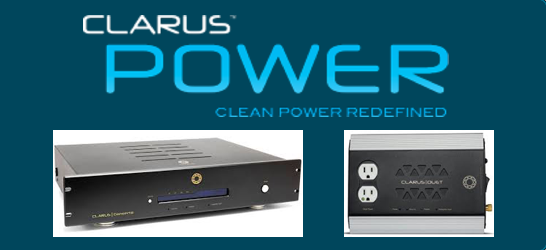
Back in the Fall of 2018, I did a three-part review of Clarus Cables from Gordon J. Gow Technologies. The company was established in 2011 in Orlando, FL, and the cables are designed by well-known cable designer Jay Victor. You may want to read Jay’s story, which he shared with me in Part Two of the cable reviews. This review is about their power conditioners, and I should probably get on with telling you about them.
Duet Power Block
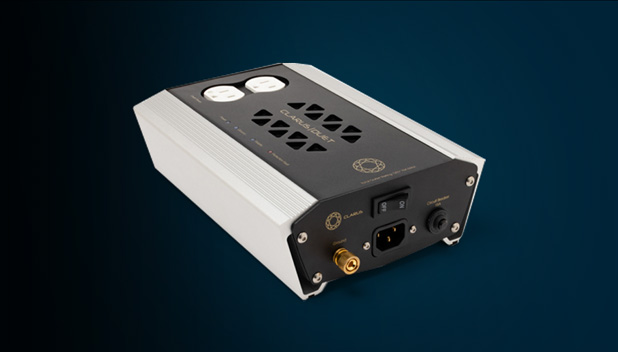
Let’s start by talking about the Clarus Duet Power Block at $1,250. When I opened the Duet, I was surprised by its rather mundane looks but impressed by the weight. Let’s be honest though, why would you waste design time on the looks of a two-outlet unit? You will probably never see it in your system.
The Clarus Duet is designed from the ground up to be a power conditioner for high-powered monoblocks and powered subwoofers. These components are exactly where most power conditioners actually decrease the dynamics of your system. With the Duet, Clarus has designed a power conditioner with enough amperage to not suppress dynamic range. It uses a huge 30 amp core. This ensures an amp signal with less noise and great dynamics. You can find more technical specs for the Duet on the Clarus website here.
Concerto Power Conditioner
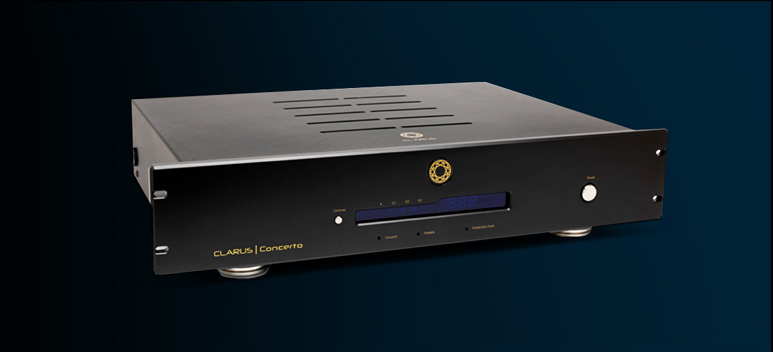
When I was unpacking the box from Clarus, the first thing I unpacked was the Concerto power conditioner. It was very impressive looking. I was surprised but pleased to see that it came with a lifter/manager for the power cables.
The Concerto at $3,600 is their full-featured model. It has eight hospital-grade outlets divided into three groups. Two are optimized for analog components, four for digital components, and two for high-current amplifiers.
The analog outlets use Clarus’ advanced C-Core filters. These are designed to “ensure there is no restriction of dynamics.” The four digital outlets use “complex multi-level filtering” to deliver clean power to DACs, CD players, and other digital gear. The high-current outlets use a “massive 30A C-Core filter” to deliver full power without restricting dynamics in amplifiers, powered subwoofers, and other high-current equipment.
Review System
The Clarus Duet and Concerto power conditioners came in while my reference system was in a bit of flux. I own and often listen to the wonderful DeVore gibbon Super Nines. Still, these days I have been spending more time with the ElectrostaticSolutions QUAD ESL 57s, and I used them for this review. They were powered by a pair of Butler Audio MONAD 100 monoblocks, and I used the LTA MicroZotl 3 preamp.
The biggest change of all in my system is the source. With my vision continuing to deteriorate, I have been listening to more and more digital. So the source I used for this review was the Innuos Statement server with the BorderPatrol DAC. Watch for an upcoming review of the Statement with the BoarderPatrol DAC. I will also be reviewing it with the Lampazator Golden Atlantic DAC, and the PS Audio DirectStream DAC. I have been auditioning for a permanent DAC to match with the Statement. These have been my candidates for my own system.
Dirty Power and Power Cables
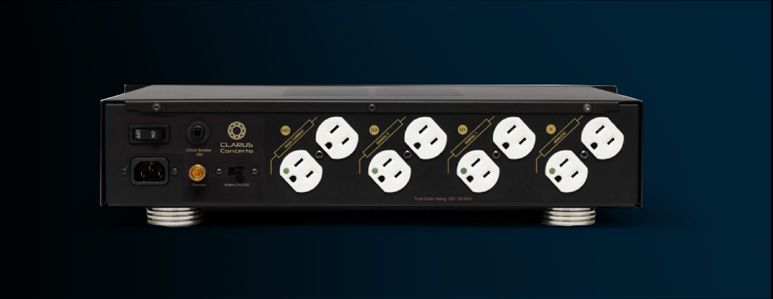
I became aware of the negative effects of dirty power in my college days in Texas. When I moved out of the dorms into a 14-foot mobile home, I could listen to music much later at night. To my surprise, I discovered that my system sounded much better late at night. Back then no audio company I am aware of made power conditioners.
I tried many devices from computer companies and other electronic devices, but I never found a solution that made my system sound as good all of the time as it did late at night. Believe me, I got a lot of kidding from Becky for years about “good” and “bad” electricity, and now even she is a believer.
When the audio tweaks and cable manufacturers started making power cables and power conditioners, my interest was piqued about the conditioners. I’ll admit, however, that I laughed about the idea that the last six-feet of miles and miles of cabling could make a difference.
It turned out, however, that I was wrong, dead wrong. I heard the difference from the first Shunyata Black Cobra cables when a friend of mine drove over an hour to bring them to me to convince me. Since then, from the Clarus Crimson Power Cables or the Audience Power Cables, and others, I have consistently and easily heard the difference power cables make in a system.
This was not so with early power conditioners. Yes, they sometimes gave you a quiter background, but they also limited dynamics. We now have a variety of power cleaning devices that improve sound and even a few that do this with big amps plugged into them
High-Power Solutions
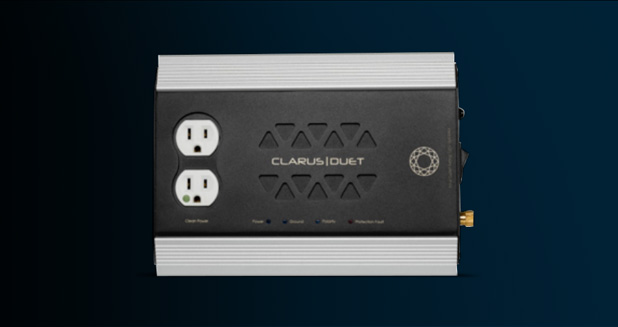
Designer Jay Victo assured me that the outlets on the Duets and the two outlets on the Concerto that are marked “high-power” are exactly the same. Being the skeptic that I am, I unplugged everything from my HB Cables PowerSlave Marble and plugged it all into the Concerto except for the MONAD monoblocks which I plugged them into the Duet.
After several weeks of switching the amps between the Duet and the Concerto, I came to the same conclusion. Plugged into either the Duet or the Concerto, they sounded exactly the same. This is very good news on two fronts. First, if you have only two high-powered amps, you don’t need the Duet as you can use the high-power outlets on the Concerto. Second, if you need more than two high-powered outlets, you can get the same improvement by just adding the Duet to your system.
These two products from Clarus are as good as any active power conditioners I have heard in my system at any price. This would include conditioners from Synergistic Research, High Fidelity Cables, Shindo, Audience, Torus, Bybee, Furutech, and Isoclean. I listened to the Concerto and the Duet for weeks and never once thought they were hurting my dynamics. In fact, it was just the opposite.

